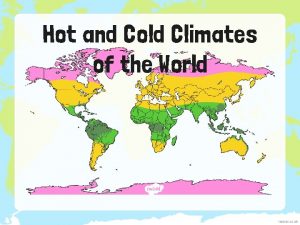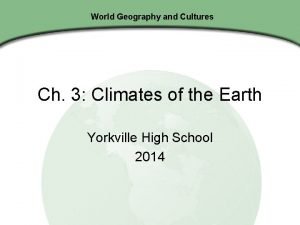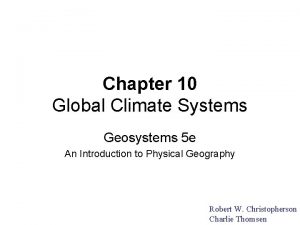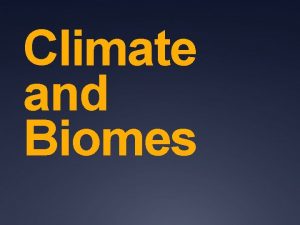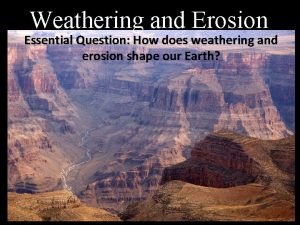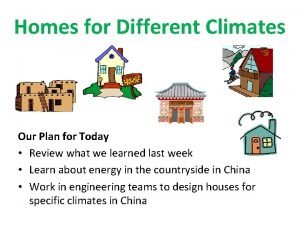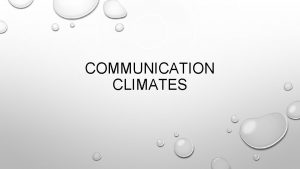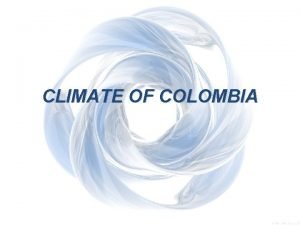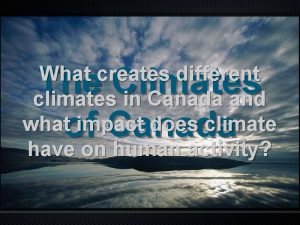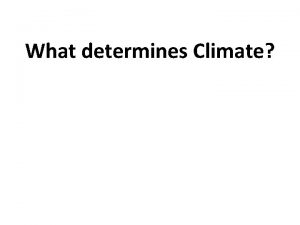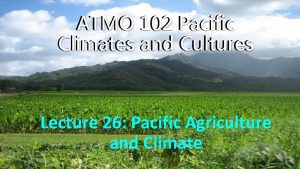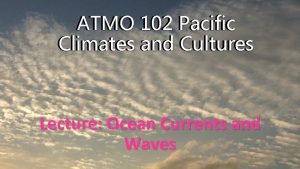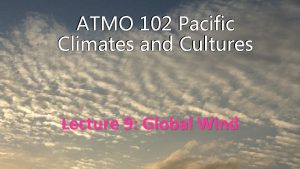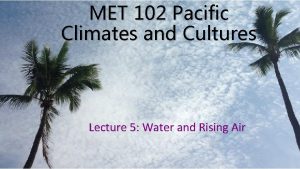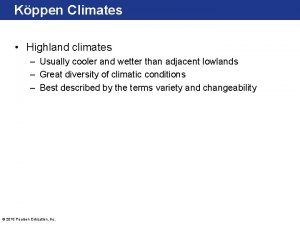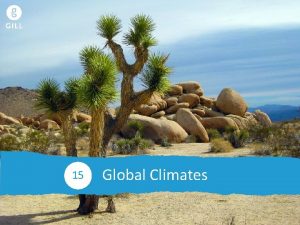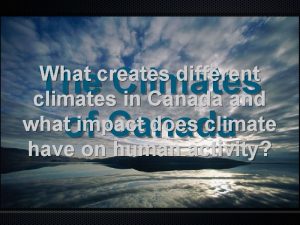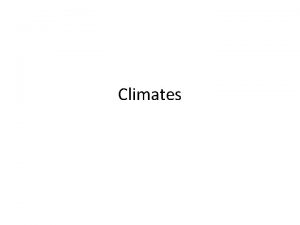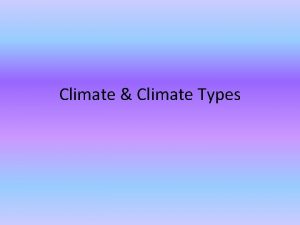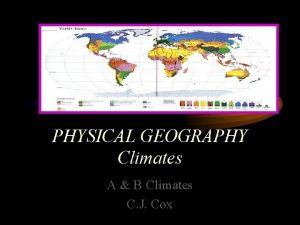ATMO 102 Pacific Climates and Cultures Lecture 11




















- Slides: 20

ATMO 102 Pacific Climates and Cultures Lecture 11: Hawaiian Winds

Local Wind Examples Continued • Navigation Close to the Islands • Near Hawai’i Island the local winds modify navigation and names can warn seafarers • Winds from the mountains are known as the Mumuku • Winds from the shore are known as the Ho’olua • A strong Kona wind is the Kula’ipau – which mean to completely knock over • Seasonal Winds - There are only 2 seasons in Hawaii • Kau - Summer (May to October) • Ho’oilo – Winter (November to April) • Kona winds caused by Kona storms (cold upper level storm) that develops in winter, is mentioned many times.

Hawai’i’s Sea-Land Breezes • Land-Sea Contrasts Drive the Sea. Land Breezes • Day – land heats up more rapidly • heated air rises, low pressure over land, and high pressure (cool ocean) off shore. • wind flows from ocean to land • Called a sea-breeze and often produces clouds and showers over the mountains. • Night – land cools off faster than the sea • After land cools faster, the ocean is now relatively warmer • relatively warmer air over ocean rises • air cooled over land flows downslope and out to sea • Called a land-breeze

Oahu Sea. Breeze Clouds • Sea breeze front from Pearl Harbor to Waikiki • Can see clouds developing over Waikiki and Manoa • You can see the orographic clouds over the Ko’olaus.

Hawai’i’s Sea-Land Breezes • Different strengths for each Island depends on: • Height of the mountains • overall size of the island • strength of the large-scale winds at any one time 2 PM • Maui and Island of Hawai’i • taller volcanoes block the large-scale flow • allow heat to build up on the leeward sides • even when the large-scale winds are moderately strong • increases the strength of the daily sea breeze over the lee slopes. • Kaua’i and O’ahu 2 AM • Have smaller mountains that do not block the flow • only experience well developed sea-breezes under lighter largescale wind conditions.

Flow Splitting on Maui • Streamlines or flow lines (in red) are drawn parallel to the local wind direction • Show impact of the mountains on the flow during the afternoon on a typical trade-wind day.

Why is Hana so wet? • Hana is on the Windward side • This is where the trade winds split, swirl around and break in many directions • Haleakala breaks the wind, causes orographic clouds and heavy precipitation

Topography, Wind, Rain & Vegetation • Moloka’i – the island of the winds • Mountains play a smaller role • Winds can pass easily over • western half is dry (no orographic rainfall) • eastern half is wet due to the small mountain range • All the Islands have a wet region and dry region • Wet regions are associated with the windward sides • Dry regions are associated with the leeward sides

Increased Wind Speeds Between Islands • Several articles mention the channel between Moloka’i and Lāhaina, Maui • Dangerous for Navigating • Increased wind speeds due to the funneling effect of how close the islands are and the topography • Cause large waves/swells

Forecasted Regional Surface Winds • www. weather. Hawaii. edu • Go to the bottom right thumbnail image for WRF Model Output • Then choose Winds • Then choose Surface • Normal Flow Example(October 2015): • Trade winds are visible • Counter-clockwise rotating system visible • Today’s Forecast with the Kona Low.

Forecasted Surface Winds • Disturbance in the trade winds by the islands is clearly visible • Wind speed increases noticeable between Hawai’i and Maui.

What are Ahupua’a? • An ahupuaʻa is a section of land. • The borders of each ahupuaʻa usually follow natural boundaries, like mountain ridges or streams. • Ahupuaʻa can stretch from the mountain ridges to the coral reef system. • Ahupuaʻa vary in size. Some are as small as 100 acres. Others are as large as 100, 000 acres. • Each ahupuaʻa has the necessary foods and materials for ʻohana (families) to live comfortably. Info and images taken from: http: //www. kumukahi. org/units/ka_honua/onaepuni/ahupuaa




Mālualua - sea wind that blows hard from the northeast Kuilua – windward wind that churns up the sea ‘Ili‘ililauākea – wind that blows inside of Hanauma, wind from the mountain that darkens the sea and tosses the kappa of Paukua Limulipu‘u - wind that comes ashore at Waimānalo ‘Ala‘eli - of Mānoa Valley Malailua - strong, blustering wind at Nu‘uanu

Kumuma‘o – of Kaluako‘i, the Ho‘olua in the forest, roaring wind of Kona and Ko‘olau‘ Ūkiukiu – of Kalama‘ula that burns the ‘ai of that hot plain Pa‘ūpili – brings calm to Īloli


‘Olaukoa – of Ukumehame that tears apart the hale at Olowalu Ma‘a‘a – wind of Lahaina that settles at Kamaiki ‘Imi-hau - stormy wind at Lāhainā/Keka’a Kaua‘ula – wind that blows and roars up the cliffs of Kahakuloa and Waiuli at Honolua Hau – wind that descends from the uplands of Kula

‘Āpa‘a: wind that flies about like vapor on Kohala upland cliffs Kīpu‘u: cold wind of Waimea that hurts the skin Nāulu: rainy wind of Kawaihae that comes and dashes the milo leaves of Makaopau Kipu: of Kahuā Moa‘e: wind of Kohalaiki that swells or gathers ‘ Ua Kea: source of storms of Hilo, shearing off the edges of hale and breaking it up Moani: light, gentle breeze usually associated with fragrance of Puna
 Characteristics of organizational culture
Characteristics of organizational culture 01:640:244 lecture notes - lecture 15: plat, idah, farad
01:640:244 lecture notes - lecture 15: plat, idah, farad Unfenced grasslands in tropical and temperate climates
Unfenced grasslands in tropical and temperate climates Hot and cold climates
Hot and cold climates Chapter 3 climates of the earth answers
Chapter 3 climates of the earth answers What causes wind to blow brainpop
What causes wind to blow brainpop Lesson 1 climates of earth
Lesson 1 climates of earth Explain how köppen’s climate system classified climates.
Explain how köppen’s climate system classified climates. What determines a region's climate
What determines a region's climate Mechanical weathering is more rapid in warm wet climates
Mechanical weathering is more rapid in warm wet climates Houses in different climates
Houses in different climates Communication climate definition
Communication climate definition Where is colombia located?
Where is colombia located? Climates of france
Climates of france Different climates in canada
Different climates in canada The three kinds of temperate marine climates all have
The three kinds of temperate marine climates all have What is sociology perspective
What is sociology perspective Recreational activities across cultures and genders
Recreational activities across cultures and genders Chapter 20:1 operating the microscope
Chapter 20:1 operating the microscope Indulgence vs. restraint
Indulgence vs. restraint Southeastern and gulf cultures
Southeastern and gulf cultures



